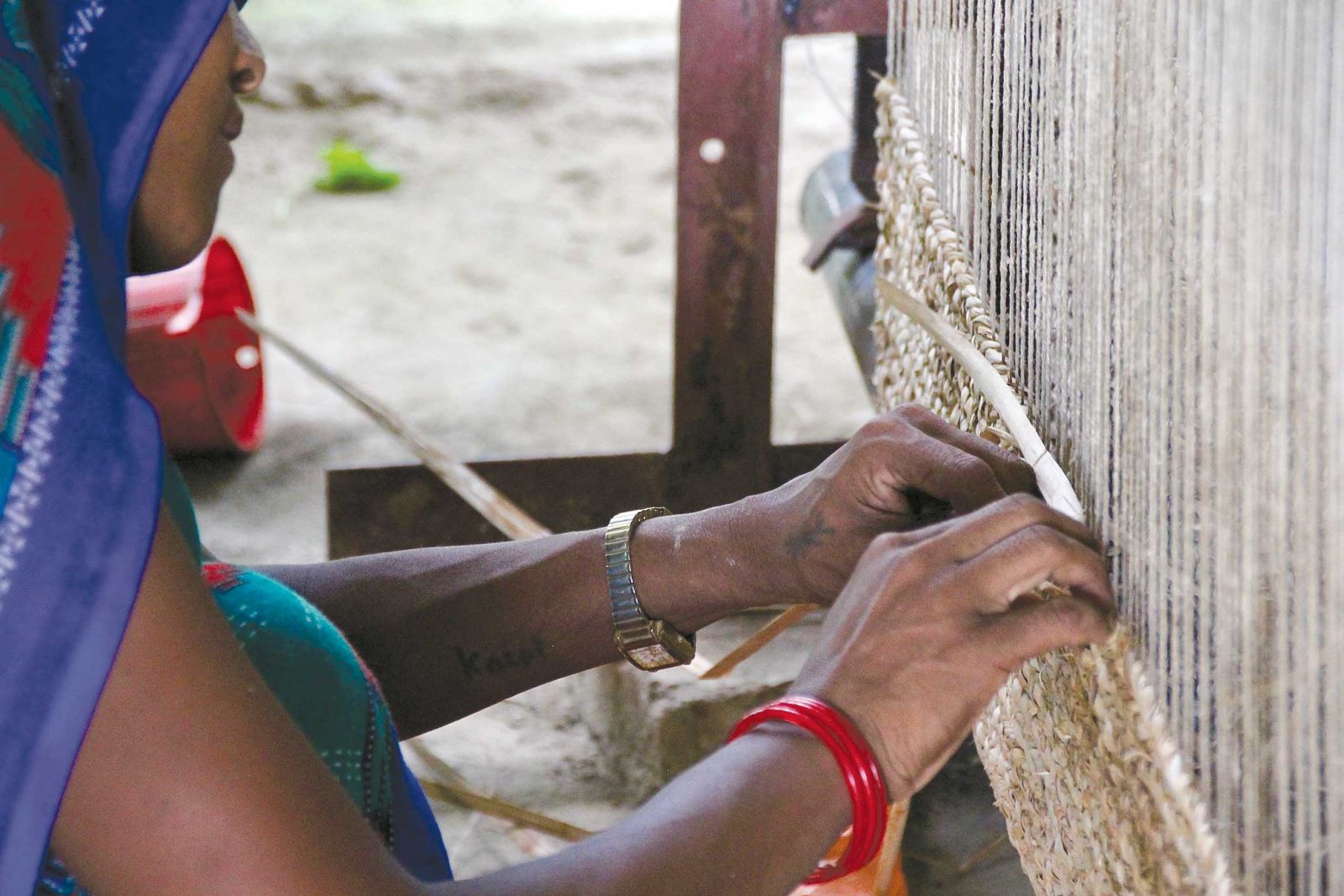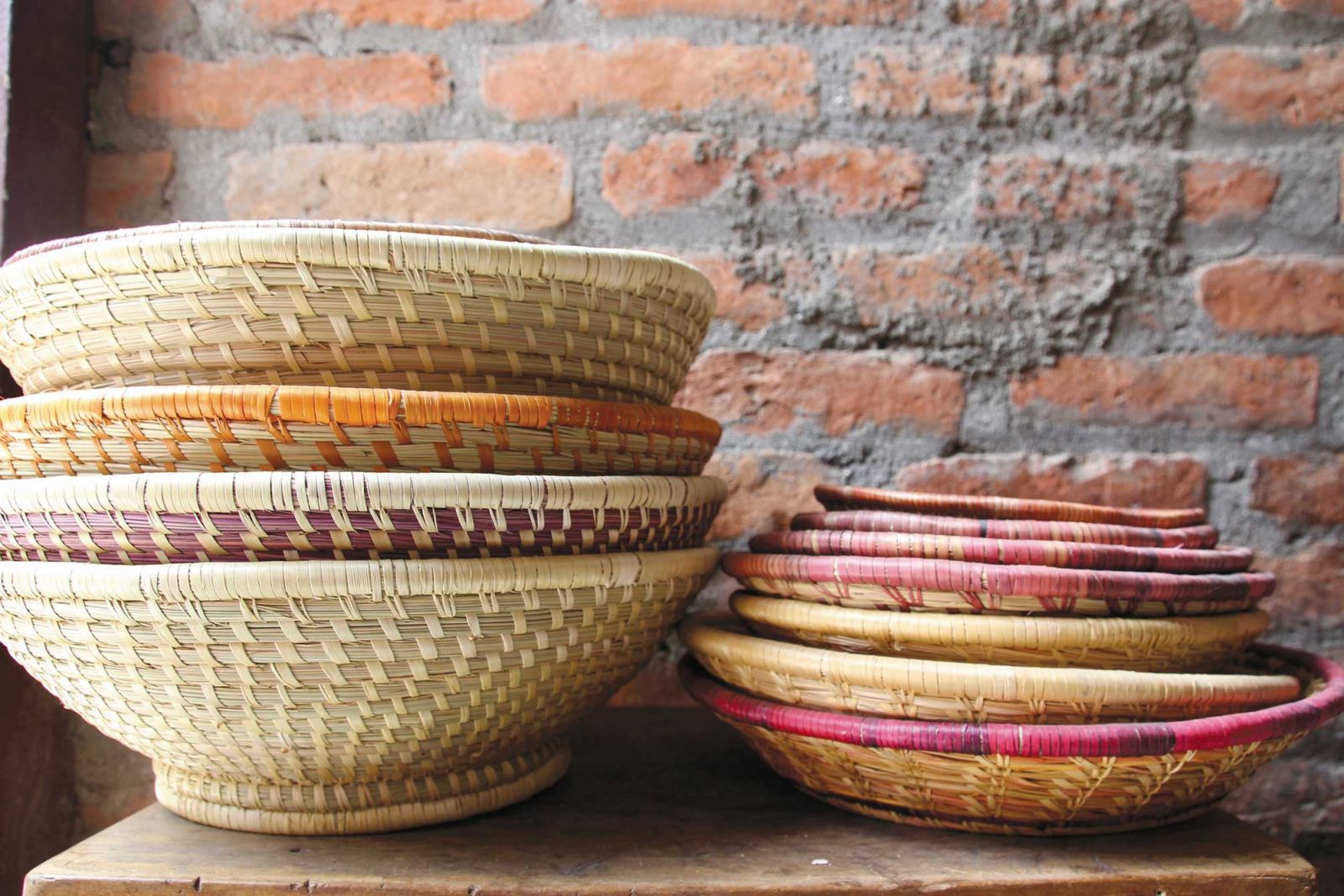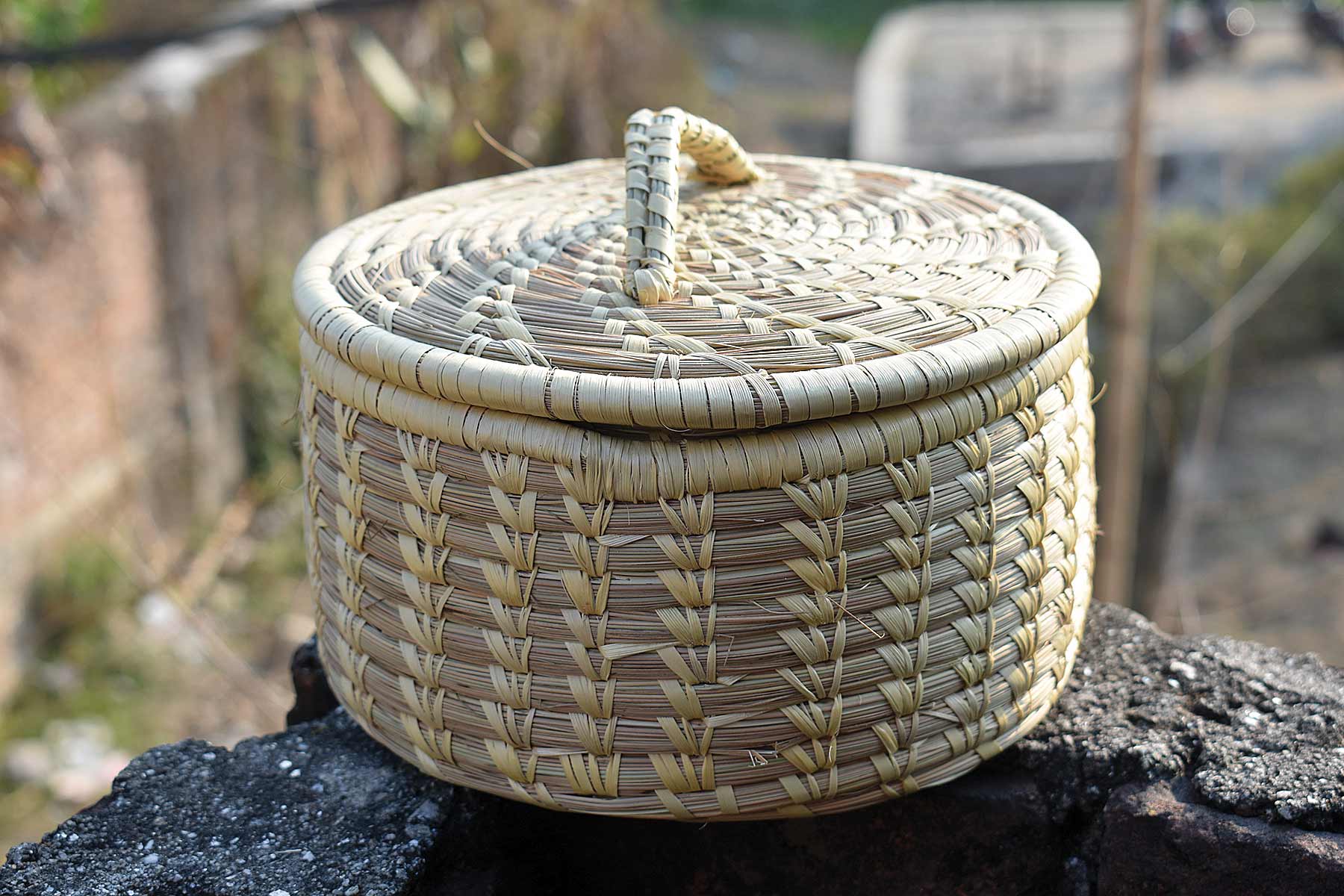Throughout time, crafts have served as way for societies to create symbolic reflections of their daily lives and preserve their tradition and culture. Craft work has allowed generations of skill and practice to flourish, cementing its significance and importance within a society. Nepal is home to hundreds of ethnicities and people groups, each with their own unique culture and tradition, featuring colorful displays of products and crafts all embedded within indigenous knowledge of the country. Interning for Nepal Knotcraft Centre over the past two months has given me the wonderful opportunity to see the many ways that culture comes to life in the shape of handicraft products.
The Nepal Knotcraft Centre supports hundreds of women from various Nepali ethnic groups, focusing on those of socially and economically deprived communities. NKC partners with these women in improving their livelihood, while also paying tribute to the cultural value and significance of their craft. Knotcraft has always been committed to research and development in the precious knowledge of these crafts and its founder, Mrs. Shyam Badan Shrestha, has not settled for anything less. She has dedicated herself to natural fibre exploration in Nepal, promoting and preserving the immense beauty and value of these products and skills.
Basketry is a significant part of understanding craft work in Nepal, with it being one of the oldest and most significant practices of the Tharu, a people group Knotcraft works with. According to Maya Rai, Managing Director of Knotcraft, baskets for the Tharu people work to sustain their art and skill because the activity is associated with both ceremonial and everyday activities. She believes that traditional basket making has become a way to transfer skills generationally, in order for members of the community to preserve their culture. Mothers and daughters are tied together through basket making since it is the mother’s duty to pass on her skills of weaving in order to prepare her daughter for marriage. Baskets have become closely linked to the essence of marriage for the Tharu, and a series of baskets called Gohari are woven by brides and presented as a form of dowry to showcase their skills. Basketry skills reflect the ability of women to manage a household, as well as operate as a gift exchange binding two families together through marriage.
The tradition of basketry however has transitioned to be more of a leisure activity, and less of a cultural practice, with those traditionally woven baskets slowly being replaced by cheaper synthetic alternatives. Nowadays, Maya says that only a few Tharu women know their traditional basket weaving techniques and Tharu men who used to make different gifts for their inlaws from natural fibres are now using plastic materials or buy readymade chairs. As a result, the practice of weaving and giving personalized gifts is fading away. In an important case study research conducted by Maya Rai and Abhilasha Sharma, they were told this shocking comment by a 63-year-old man: “Our cultural baskets are losing their unique features and importance because of cheap Chinese plastic products in the market. During our days, we did not have these products, we worked hard at making the gifts to our in laws, but now people get them easily in the market, which are all artificial. I am sad for the disappearance of our cultural valuables.” (Quote taken from “Tharu Basketry: A Study on the Cultural Significance of the Traditional Tharu Baskets”)

What’s slipping through the cracks is devastating to witness, especially because it’s slipping away so silently and so undisturbed. People are not aware of the subtle ways that synthetic materials have come to overshadow, older, more traditional products. Culture, while difficult to define, is perhaps easier to see and feel and so the risk of losing something so delicate, and so pure as a craft, closes a whole world of deep cultural roots.
A similar issue has arisen in respect to other forms of craftwork, and the use of plant fibres for traditional weaving. The trend of slowly succumbing to cheap plastic alternatives is proving to be detrimental for the state of traditional crafts within the realm of these communities. In another area of the Terai, mat weaving serves as an important way to preserve culture and has become linked to the indigenous people that occupy the land, and the natural resources in the area that have always been a part of their lives, culture and economy. Visiting this area recently with Knotcraft gave me a stark reflection of the realities faced by the communities, and the tremendous benefits there are in supporting traditional skills. Individuals in this part of the country rely on the stability given by producing and marketing their mats. The necessity therefore to support and promote natural products is an ever more important task.
In predicting the future of traditional crafts, there is an increasing need to take the layers of globalization into consideration. Social and economic changes in Nepal are now occurring within a context of modernization and political change, and these forces are evermore present in light of globalization. The reality of the matter is that in many respects, lifestyles are changing and adapting, and this is going to have an impact on the manner in which individuals engage with the world around them..jpg)
The handicraft industry is a huge market in Nepal, accounting for much of the country’s exports and domestic sales. However, with an inflow of imports, and an overdependence on imported materials, the ways that people consume is changing. There is now perhaps less need to spend time weaving a basket if you can just buy something cheaper, and perhaps more accessible. The result of this is a whole lost practice, and with it a lost opportunity to upkeep that practice. Knotcraft is therefore working to revive these skills and in doing so, present realistic and sustainable ways of maintaining it.
Some lesser-known vegetable dishes from the southern plains
I’m not a vegetarian but I love vegetables. And whenever I get to the southern plains of Nepal, I try...










